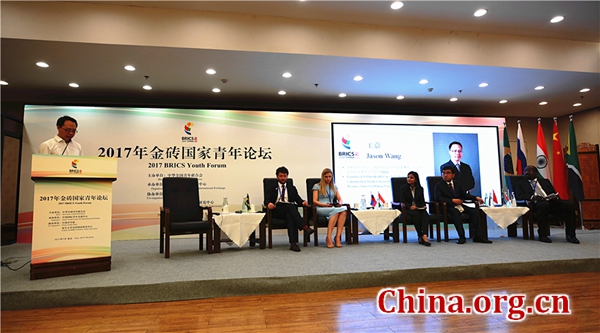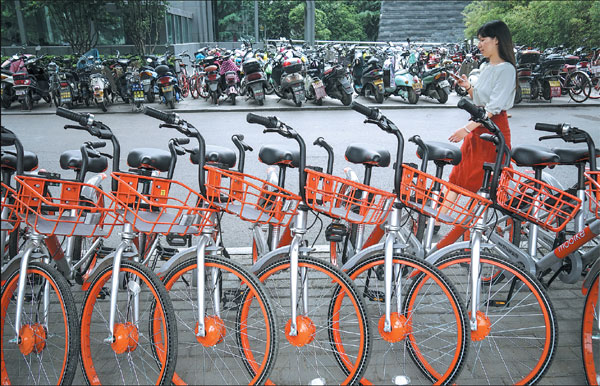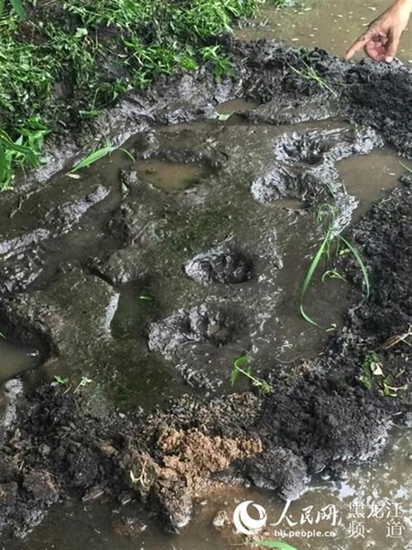BRICS youth debate innovation and entrepreneurship
|
|
|
Guest speakers from five BRICS countries join a discussion at the 2017 BRICS Youth Forum in Beijing on July 25. [Photo by Zhang Jiaqi/China.org.cn] |
The innovativeness and entrepreneurship of the youth stand out as the two main focal points at a panel discussion of young delegates at the 2017 BRICS Youth Forum in Beijing on July 25.
The BRICS countries have similarities in their development course, and exchanging experiences in fostering innovation and entrepreneurship among the BRICS youth is conducive to coordinated cooperation among the BRICS countries.
Marco Vinholi, an official from the Legislative Assembly of the State of San Paulo of Brazil, introduced the concept of active entrepreneurship and the obstacles faced by start-ups in Brazil.
“The mark of our generation is innovation and entrepreneurship,” he said. “The basic obstacles to youth entrepreneurship are the lack of qualifications, international cooperation and funding for young entrepreneurs, as well as the bureaucracy. The BRICS countries should improve people-to-people exchanges, increase cooperation on innovation and provide more funds.”
Svetlana Skorikova, project manager of the Center for International Cooperation of the Russian Union of Youth (RUY), called for setting up a BRICS youth business incubator.
Innovation and entrepreneurship are among the interesting areas of cooperation for young people, said Skorikova, further specifying that the main purpose of the incubator is to generate and encourage more business cooperation among BRICS countries.
Gitika Lakhotia, risk consultant of Klynveld Peat Marwick Goerdeler, a professional service company and one of the Big Four auditors, outlined the measures the Indian government introduced to promote youth entrepreneurship since 2014.
The Start-up India and Stand-up India initiatives facilitated business registration by providing a one-stop service. Besides, India also established a new bank to help the re-financing of SMEs and provided professional training to SME entrepreneurs and women.
Xu Zewei, CEO of 91jinrong.com, an e-finance platform in China, shared his experience of operating a start-up company in China.
“You will not succeed unless you try,” He encouraged the youth to start new companies under the favorable policies towards youth entrepreneurs.
He also called for further decreasing the cost of starting new companies, and encouraged mutual help among investors and entrepreneurs.
South African representative Abel Motsoge, chairman of JHB head office, pointed out the major difficulties for start-ups in South Africa.
He said many new companies failed to operate for more than two years due to the high bidding cost and bureaucracy. He called for more government support and increasing BRICS cooperation in communications, finance, infrastructure, logistics and renewable energy.


